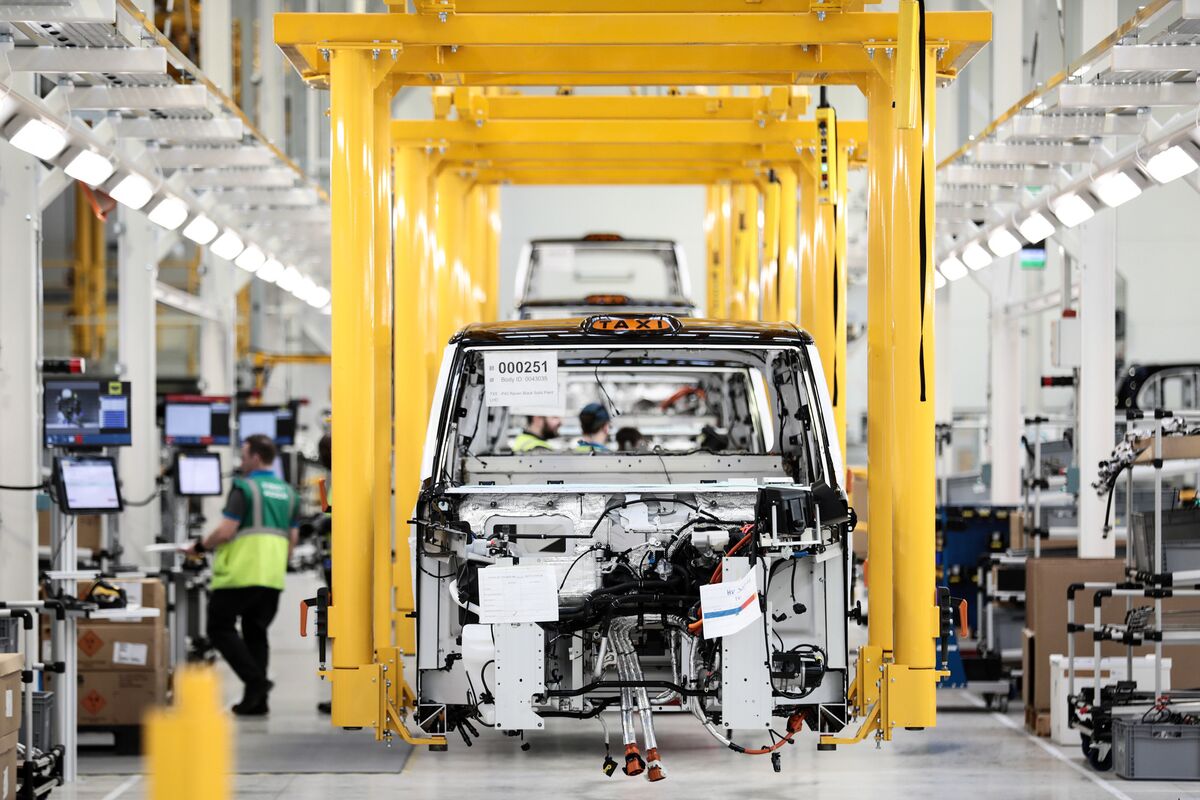The China Factor: Why Luxury Carmakers Face Headwinds In The World's Largest Auto Market

Table of Contents
Shifting Consumer Preferences in the Chinese Luxury Market
The Chinese luxury car market is undergoing a dramatic transformation, driven by a shift in consumer demographics and preferences. This presents a major hurdle for traditional luxury brands accustomed to a different buyer profile.
Rise of Domestic Brands
The rise of domestic Chinese luxury car brands is a significant factor reshaping the landscape. These brands are no longer simply offering cheaper alternatives; they are increasingly competing on quality, technology, and design.
- Examples: Brands like Nio, Xpeng, and BYD's premium line are gaining significant market share, challenging established players.
- Competitive Pricing: Domestic brands often offer competitive pricing, making them attractive to a wider range of consumers.
- Technological Innovation: Many Chinese brands are at the forefront of technological advancements, integrating cutting-edge features such as autonomous driving capabilities and advanced connectivity solutions.
Younger, More Tech-Savvy Consumers
The Chinese luxury car market is increasingly dominated by younger, tech-savvy millennials and Gen Z consumers. Their priorities differ significantly from previous generations, placing greater emphasis on technology, sustainability, and personalized experiences.
- Desired Tech Features: Consumers prioritize features like advanced driver-assistance systems (ADAS), large touchscreens, seamless smartphone integration, and over-the-air software updates.
- Brand Storytelling and Social Media: Effective brand storytelling and a strong social media presence are crucial for engaging this digitally native audience.
- Preference for Electric Vehicles (EVs): The growing preference for electric vehicles and a stronger focus on environmental sustainability are significantly impacting buying decisions.
Navigating China's Regulatory Landscape
China's regulatory environment plays a crucial role in shaping the luxury car market. Stricter regulations and evolving trade policies create significant challenges for international brands.
Stricter Emission Standards
China is implementing increasingly stringent emission standards, pushing for greater fuel efficiency and wider adoption of electric vehicles. This necessitates significant investment and adaptation from luxury carmakers.
- Regulations: The "China 6" emission standards are among the world's strictest, placing pressure on manufacturers to reduce pollutants.
- Fuel Efficiency and EV Adoption: Meeting these standards often requires significant investment in developing fuel-efficient engines and transitioning to electric vehicle production.
- Compliance Costs: The costs associated with meeting these regulations can significantly impact profitability.
Import Tariffs and Trade Policies
China's import tariffs and trade policies directly impact the pricing and profitability of imported luxury vehicles. Trade tensions and changing policies create uncertainty for international brands.
- Tariffs: Import tariffs increase the cost of imported vehicles, making them less competitive compared to domestically produced models.
- Impact on Import Costs: Fluctuations in tariffs directly affect the final price paid by consumers, potentially impacting sales volume.
- Market Share: Higher import costs can significantly affect market share, as consumers may opt for more affordable alternatives.
Economic Uncertainty and Geopolitical Factors
Macroeconomic factors and geopolitical events also significantly influence the Chinese luxury car market, adding layers of complexity for international players.
Economic Slowdowns and Consumer Confidence
Economic slowdowns and fluctuations in consumer confidence directly impact luxury goods purchases, including high-end vehicles. Adapting to economic uncertainty is crucial for survival.
- Economic Indicators: Factors like GDP growth, inflation, and unemployment rates directly influence consumer spending on discretionary items like luxury cars.
- Impact on Luxury Goods Purchases: During economic downturns, consumers often curtail spending on luxury items, impacting sales.
- Strategies for Adapting: Luxury brands must develop strategies to navigate economic fluctuations, potentially by offering financing options or focusing on more affordable models.
Geopolitical Risks and International Relations
Geopolitical risks and tensions in international relations can significantly impact the stability and predictability of the Chinese market, affecting supply chains and brand perception.
- Geopolitical Events: International trade disputes or other geopolitical events can create uncertainty and disruption in the market.
- Impact on Supply Chains: Disruptions to global supply chains can lead to delays and shortages, affecting production and sales.
- Brand Image and Reputation Management: International brands must carefully manage their brand image and reputation during times of geopolitical instability.
Conclusion
The "China Factor" presents a complex set of challenges for luxury carmakers. Shifting consumer preferences, a demanding regulatory environment, and economic uncertainty all contribute to a highly volatile and dynamic market. The rise of domestic Chinese brands, the focus on technological innovation and sustainability, and the need to navigate complex regulations are key takeaways. Understanding the China factor is crucial for navigating the complexities of the world's largest auto market. Further research into these challenges will be vital for success in this dynamic landscape.

Featured Posts
-
 Jenna Ortegas Hidden Marvel Role A Forgotten Appearance That Will Shock You
May 07, 2025
Jenna Ortegas Hidden Marvel Role A Forgotten Appearance That Will Shock You
May 07, 2025 -
 Isabela Merced Em 10 Filmes Imperdiveis Conheca A Atriz De The Last Of Us
May 07, 2025
Isabela Merced Em 10 Filmes Imperdiveis Conheca A Atriz De The Last Of Us
May 07, 2025 -
 John Wick 5 Rumors Is Keanu Reeves Involvement Confirmed Or Denied
May 07, 2025
John Wick 5 Rumors Is Keanu Reeves Involvement Confirmed Or Denied
May 07, 2025 -
 Nikki Fargas Aces President Discusses Community Impact 2025 Season Plans
May 07, 2025
Nikki Fargas Aces President Discusses Community Impact 2025 Season Plans
May 07, 2025 -
 Rihannas Pregnancy Journey Expecting Baby Number Three
May 07, 2025
Rihannas Pregnancy Journey Expecting Baby Number Three
May 07, 2025
